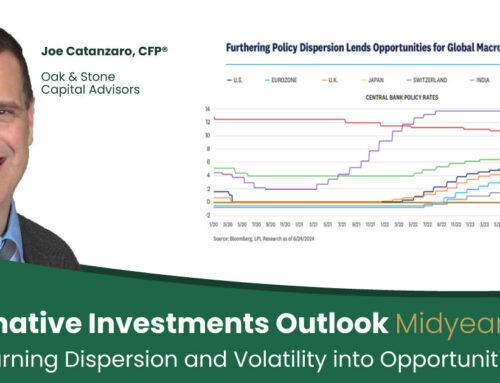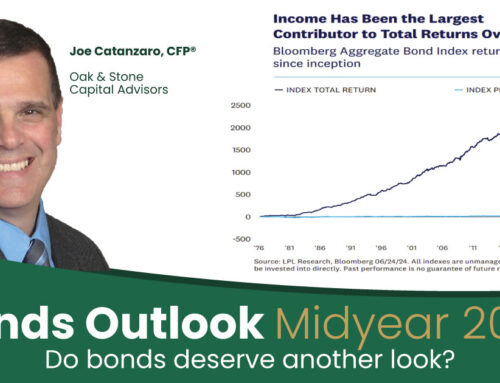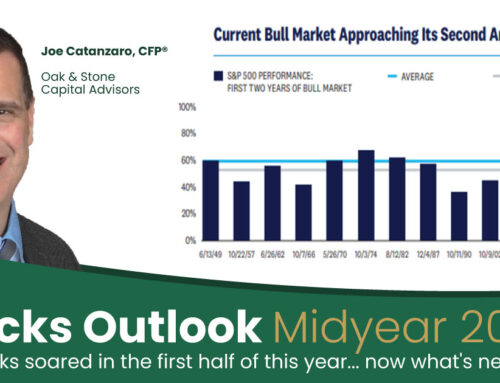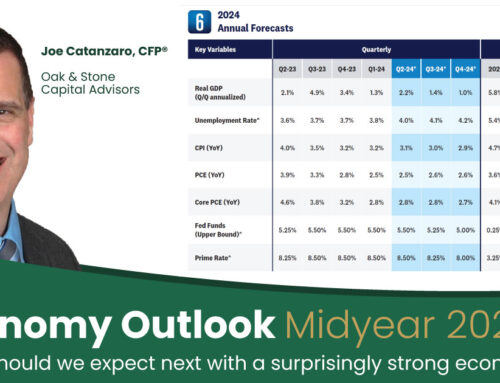Another day and another record high for the broader market.
Decelerating consumer inflation and limited surprises from the Federal Reserve (Fed) drove the S&P 500 up 0.9% yesterday, marking its 28th record high of the year. Buying pressure was relatively widespread and powered by above-average volume, somewhat of an anomaly amid the recent rally above the March highs.
While it is hard to argue with a market on a three-day record-high winning streak, a weight-of-the-evidence approach reveals few technical signals are confirming the latest breakout.
Key Takeaways
- The S&P 500 continues to print record highs despite diverging momentum and market breadth.
- The lack of confirmation in the latest breakout does not imply the bull market is over but does raise the risk of a pause or pullback unless this rally broadens out.
- The breakdown in Treasury yields could be a positive tailwind for stocks and lead to a broader rotation, especially since the move lower is predicated on softer inflation data and not material economic weakness.
- Based on the weight of the technical evidence, we prefer tactically buying weakness over chasing this rally higher.
As highlighted below, the S&P 500 has surpassed the March highs after breaking out of a bullish flag formation earlier this month. The advance was largely underpinned by below-average volume, diverging momentum, and fading market breadth. The latter has been particularly notable, as only 34% of S&P 500 stocks closed above their short-term 20-day moving average (dma) on Tuesday’s record-high close, marking the lowest percentage to accompany a new high since data began in 1990. Furthermore, there have been more four-week lows generated on the index than four-week highs over the last several weeks. The same negative divergences can be observed in longer-term metrics. For example, there are fewer stocks above their 200-dma and/or making new 52-week highs now vs. March.
Market Breadth Has Not Kept Up With this Rally
Source: LPL Research, Bloomberg 06/13/24
Disclosures: Past performance is no guarantee of future results. All indexes are unmanaged and can’t be invested in directly.
The lack of confirmation in breadth and momentum does not mean the bull market is over, but it does imply stocks could be due for a pause or pullback unless this rally begins to broaden out. It also puts added pressure for upside momentum to continue in the mega-caps, where most of the heavy lifting has been done. Shares of NVIDIA (NVDA), Apple (AAPL), Microsoft (MSFT), and Alphabet (GOOG/L) have contributed to nearly two-thirds of the S&P 500’s rebound off the April lows, with NVDA adding around one-third of the gains on its own. However, concentrated leadership at important breakout points followed by a broader rotation has been the playbook of this “Field of Dreams” bull market, where mega-caps build the breakout, and other stocks follow. But now the question remains, if you build it, will they come?
Tailwinds from Treasuries?
Treasuries have had a busy and volatile week navigating around 10- and 30-year auctions, inflation data, and a Fed meeting. Overall, inflation data appears to be moving in the right direction and supportive of eventual rate cuts. Wednesday’s core consumer inflation decelerated to 0.2% in May, below expectations and the prior month’s print of 0.3%. Similar to prior months, elevated shelter costs contributed to higher services inflation. However, according to LPL’s Chief Economist Jeffrey Roach, “Industry data show rent prices are not increasing as fast as the official government data show.” He further noted in yesterday’s LPL Research blog that rising vacancies could also help reduce stubbornly high shelter costs.
The lack of any major surprises from the Fed yesterday has kept risk appetite on the table. As expected, policymakers left rates unchanged and penciled in only one rate cut for 2024, revised down from three during the March Summary of Economic Projections (SEP). The downward revision to fed funds forecast in 2024 was partially offset by an upward revision from the three to four rate cuts forecast for 2025. Perhaps most importantly, the Fed adjusted its policy statement to acknowledge the “modest further progress toward the committee’s 2% inflation objective in recent months,” revised from the previous statement that cited a “lack of further progress” in the Fed’s inflation battle.
Treasury yields tumbled during the session, and today’s unexpected decline in wholesale inflation extended the downside momentum. As highlighted below, 10-year yields have now dipped below the 4.30%–4.35% range, a major area of support tracing back to prior highs and the 200-dma. Technically, the developing downtrend also indicates a shift to downside risk ahead for yields, with 4.26%, 4.18%, and 4.15% as the next key support levels to watch.
The recent breakdown in yields could be a positive tailwind for stocks and lead to a broader rotation, especially since the move lower is predicated on softer inflation data and not material economic weakness (i.e., a hard-landing scenario). This observation is partially quantified in the second panel below, showing a negative correlation between yields and the percentage of new four-week highs within the S&P 500.
10-Year Treasury Yields Continue to Breakdown

Disclosures: Past performance is no guarantee of future results. All indexes are unmanaged and can’t be invested in directly.
Summary
The S&P 500 continues to climb higher on the back of its mega cap components. Narrow leadership during the latest breakout has created notable divergences between price and market breadth. And while this does not mean the bull market is over, it does raise the risk of a pause or pullback unless a broader rotation develops. Falling Treasury yields could provide a catalyst for stocks, provided they continue to decline on easing inflation data and not materially deteriorating economic conditions. Based on this backdrop and the weight of the overall technical evidence, we prefer tactically buying dips rather than chasing the latest unconfirmed breakout higher.








